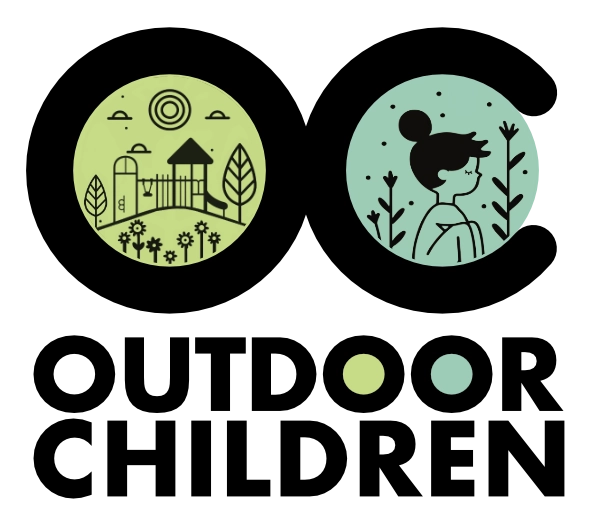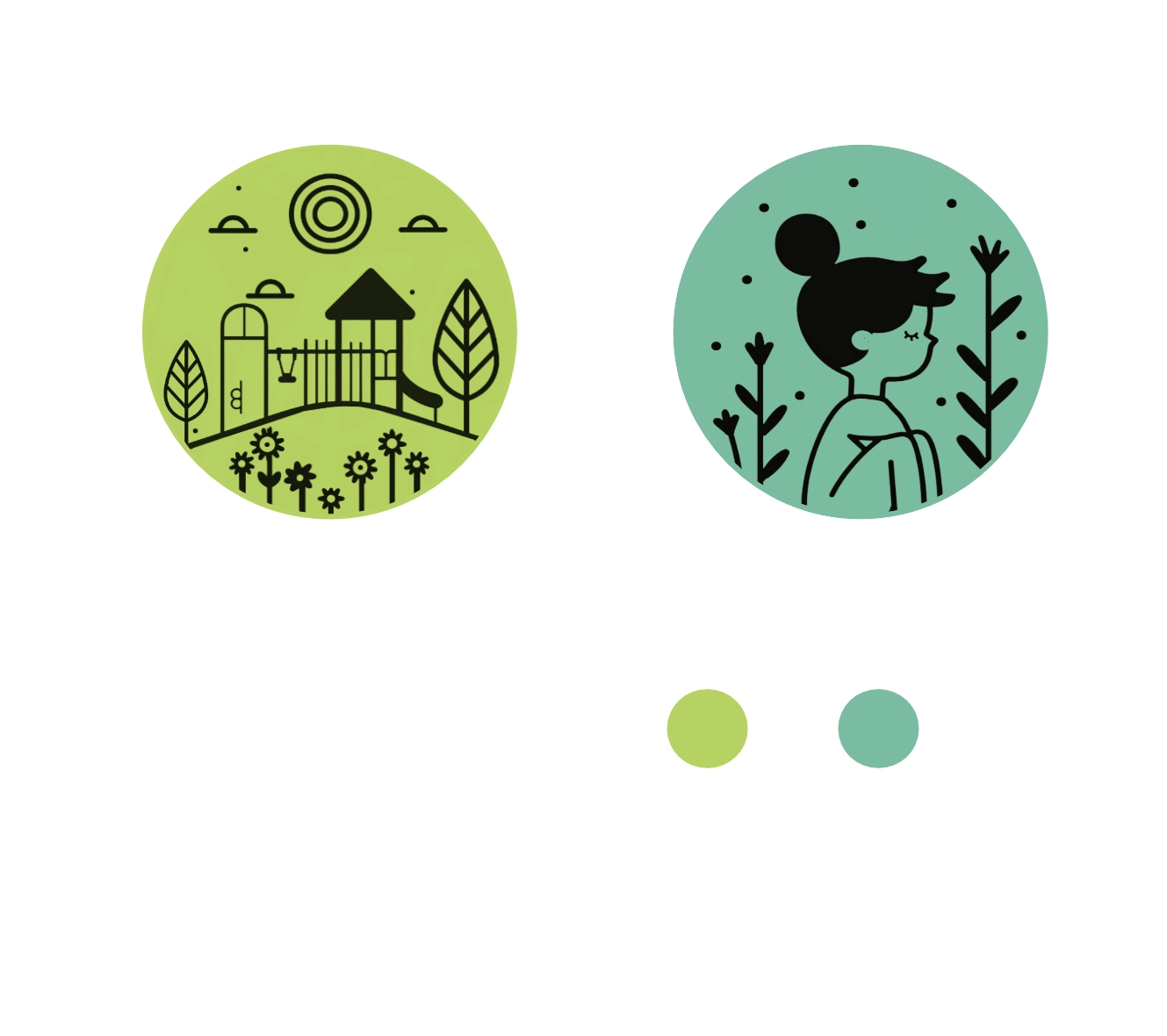Beyond the playground
"I am absolutely passionate about facilitating children’s enjoyment of historic landscapes. That could involve a play area, but it doesn’t have to."
For many years I worked on the conservation team of the Garden History Society, a statutory consultee in the planning system.
We used to see a lot of proposals for play areas which would have had a detrimental impact on the historic gardens for which they were intended to attract visitors, and I was saddened to think of the damage being done to these precious heritage assets.
At the same time, I would take my first child, Murray, to visit historic parks and gardens, and knew that there was a huge amount of fun and interest to be had without needing extra interventions. I was pleased to think that he would grow up enjoying and caring for historic gardens, like his mum.
Then one day we took Murray to a famous historic garden where the play area was right next to the car park. He insisted on going straight there and we couldn’t get him out again till 15 minutes before the garden shut. We left having seen almost nothing of the historic property, other than an unrelated playground that could have been anywhere. I was left wondering what the point had been, and whether perhaps such poorly-thought through playgrounds were doing neither the gardens nor the families any real favours.
At that moment, my passion for improving the provision for children in historic parks and gardens was born.
I authored an advice note for the Garden History Society on ways in which the impact of playgrounds on historic gardens could be minimised, but deep down, I couldn’t help but question whether there could be a better approach.
In 2010 I wrote the influential publication ‘Beyond the Playground’, which argued for new approaches to children’s play in historic landscapes. It argued that “Heritage Professionals ought to stop thinking of children as An Issue Needing to be Dealt With, throw away the catalogues and shrug off adult pressure to have something big and shiny as proof of their offer for children.”
I couldn’t be prouder of the impact of this little booklet, but perhaps you’d like a little help putting some of these principles into practice?
Here are just some of the ways in which I can help you:
- Site specific discussions on incorporating imaginative built play facilities for children (generic offerings can be so boring – each landscape has a different story, so let’s tell it!).
- Bespoke and original guidance on how to develop your child visitor experience – play, interpretation, facilities, education.
- Help understanding how children and families experience your landscape, as that can inform your strategy on how to engage them today.
- Site specific advice on incorporating conservation-friendly play provision to maximum Wow for the visitors, but with minimum Hmmm for the historic environment.
Here are some of the research projects I have done:
Battle Abbey 1066 Anniversary Playful Interpretation
In 2015 I was approached by English Heritage to help them deliver a play experience at Battle Abbey, Sussex, in time for their ‘Conquest and Consequences’ anniversary of the Battle of Hastings in 2016. This project had to date proven divisive within the organisation, with a commercial push to offer a play area with ‘wow’ factor in one of the most sensitive areas of this Scheduled Ancient Monument facing considerable opposition from the curatorial team. As a result, the project was dramatically behind an immovable schedule.
My conservation experience enabled me to devise and advocate for a solution that emphasised interpretation, or ‘reanimation’, over ‘play for play’s sake’. This playful interpretation involved two key interventions:
- I envisaged, wrote briefs for, and oversaw the tendering of a monastic themed play area adjacent to the medieval Outer Court, right at the heart of the SAM. This presented for all intents and purposes as a re-enactment of the monastic activity that would have taken place on that spot in the past. This was based on detailed research by EH’s historians, who were closely involved in the final design sign-off. Features included a quern, ox and cart with hidden slide, carpenter bench, pile of barrels for climbing on, and trestle tables for feasting. The resulting feature delighted visitors, the commercial team, and the curators. Best of all, the features stand right underneath the medieval monastic gatehouse, but from its windows appear not as a play area but simply as a faithful recreation of medieval monastic life.
- I envisaged and oversaw the creation of historically accurate figures from the Battle of Hastings, and worked with EH’s historians and curators to ensure that they were located in historically accurate sites on the battlefield itself. More subtly, arrows and shields were scattered across the battlefield as though abandoned in battle. This ensured that the otherwise dormant battlefield held some of the interest, interpretation and excitement that was otherwise only available for visitors on the annual Battle of Hastings re-enactment day. This trail has proved effective in drawing visitors out across the battlefield, engaging (and providing selfie opportunities!) for visitors of all ages.
Walmer Castle Gardens Play Provision
In 2016 I was commissioned to produce a report for English Heritage on the ‘Walmer Castle Gardens Play Provision: Assessment of opportunities’, based on a thorough understanding of the history and sensitivities of the site. This report informed the implementation of the Walmer Castle Gardens Play Trail.
Chiswick House Gardens
In 2018 I was consultant for Chiswick House Gardens on their offer for Children, presenting an ‘Outline of Possibilities’.
Waist-High Gardens
We talk to kids, we watch kids, we interview kids and finally we think we know what garden visiting means to them. But do we? Can adult brains ever really imagine what our gardens are like through a child’s eye?
As I keep banging on about how we can engage children in our gardens, these questions have been buzzing around at the back of my mind, bugging me as badly as a toddler past bedtime.
So I put together the Waist-High Gardens project, in which my gang of intrepid young garden visitors took their cameras and recorded their Day Out experiences. I was careful not to interfere with their choice of shots (all I did was edit out the thumb-across-lens views, write the captions and upload), so you’re getting a real insight into what makes them tick.
Take a look and enjoy … and perhaps bear them in mind next time you’re second-guessing what children want from your garden.
Play Facilities Planning Conservation Advice Note
I wrote a Planning Conservation Advice Note for The Garden History Society on ‘Play Facilities’, which gives guidance on how to minimise the detrimental effects of play equipment on sensitive landscapes.
You can download this below:
Beyond the Playground
In 2010 I was proud to write the ‘Beyond the Playground: New Approaches to Children in Gardens’ for The Garden History Society – a call to arms to get garden owners and managers thinking ‘outside the box’ when looking to provide for child visitors to their sites.
As part of The GHS’s conservation team, I had long been accustomed to considering the impact of new play facilities within historic landscapes. In some instances, such as in urban public parks, playgrounds are perfectly valid and chime well with the site’s historic raison d’être. In others, such as in gardens with a history of being private homes, the proposals can sit uncomfortably with the site, its history, and its aim to have a relevance in today’s society.
By thinking a little more imaginatively, we may realise that many historic gardens are inherently suited to children’s play and engagement and suddenly it may no longer seem so necessary to spend those thousands of pounds on some new brightly-coloured play equipment – ugly, expensive and always to a degree detrimental to the historic designed landscape.
We may notice a fountain that would be perfect for sailing boats in, if only a little stash of them was left ready on the edge; a Broad Walk that is calling to have a hoop rolled along it; a pond perfect for fishing were there a row of ready nets; a hill on which a kite could be flown; a hermitage that would be a thousand times more entertaining were there a hermit in it; a park where perhaps the mowing regime could allow for a temporary grass maze; bales of hay that could be left a little longer in the meadow for young climbers to conquer; or perhaps even a shrubbery robust enough to take a little rummaging.
Since its publication, this little booklet has been requested by hundreds of the most influential garden managers, play leaders and education professionals across the world!
You can download this below:
Conservation bulletin
I authored an article on children’s play in historic gardens open to the public for English Heritage’s Conservation Bulletin.
Download below:
The National Trust's views journal
I wrote an article for Views, the National Trust’s in-house journal, setting out a new way of approaching children’s visitor experiences
You can download this below:
Experiencing Arcadia
In 2016 I worked with landscape and medical historian Dr Clare Hickman on ‘Experiencing Arcadia’, an online project that developed a simple online interactive map to demonstrate how even properties with minimal budgets, skills and confidence could make better use of digital interpretation to bring alive garden history and historic garden visiting.
Call me biased, but garden history has some of the best stories – so why do we instead place our emphasis on cataloguing the chronological development of individual gardens, the minutiae of changes in ownership and the detail of construction techniques?
The result is that today’s generation of garden visitors have little idea of how much fun was had in the garden when there were musicians, games, fireworks, poetry readings, feasts, miniature naval battles on the lake and noisy menageries! Or what it was like to experience the garden at night, or if you were a child in an unwieldy dress and unsuitable shoes?
Experiencing Arcadia is a project of passion, which grew from a personal belief that general interest visitors, especially those of younger generations, were often being sidelined. And along the way, we got to have quite a lot of fun!

